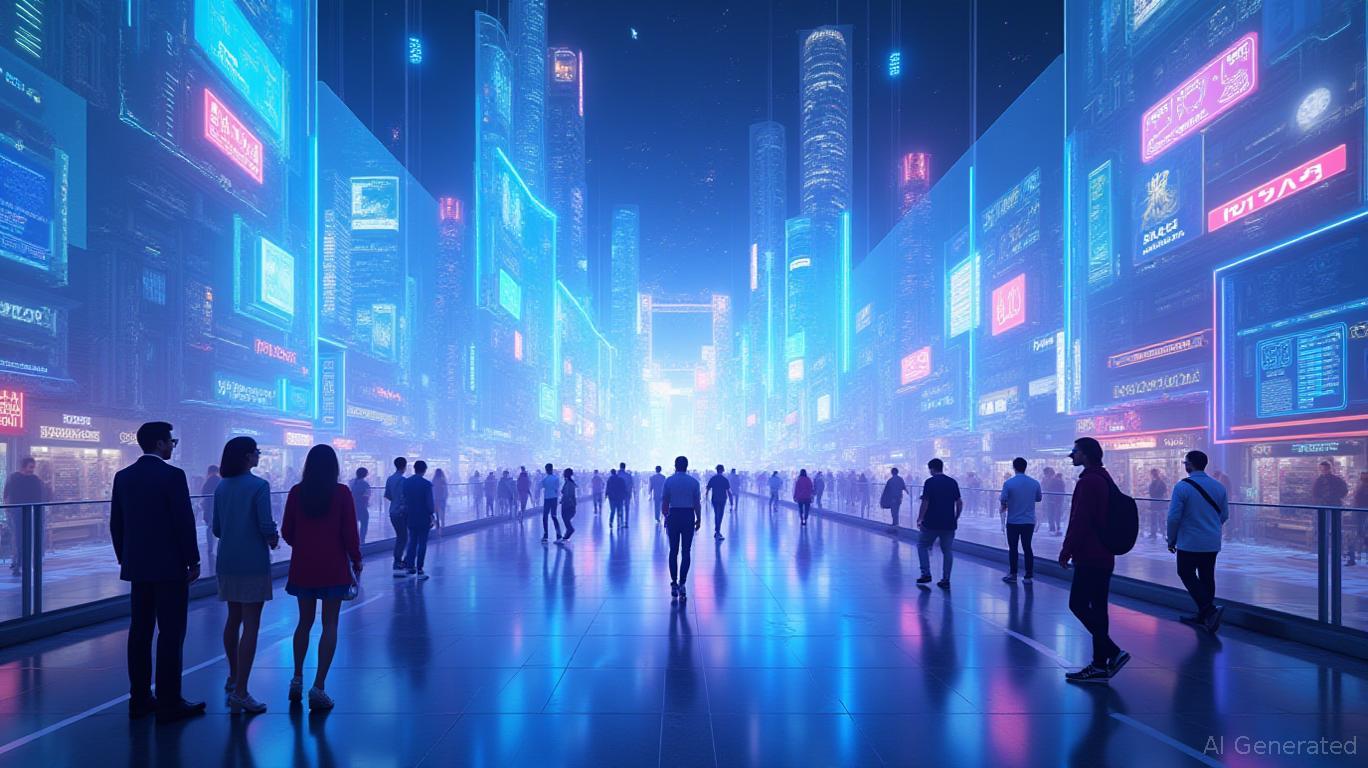Meta's V-JEPA 2: A Catalyst for the Metaverse and AI-Driven Immersive Technologies
The convergence of artificial intelligence (AI) and virtual reality (VR) is poised to redefine the digital landscape, and Meta's latest innovation—V-JEPA 2—has emerged as a pivotal milestone in this evolution. This advanced world model, announced in June 2025, represents a leap forward in AI's ability to understand and predict physical-world dynamics, with profound implications for the metaverse and immersive technologies. For investors, V-JEPA 2 signals a strategic opportunity to capitalize on the next wave of tech innovation.
The Technology: Bridging AI and the Physical World
V-JEPA 2 is a 1.2-billion-parameter model built on Meta's Joint Embedding Predictive Architecture (JEPA). Its core strength lies in its ability to learn from over 1 million hours of video and 1 million images—without requiring labeled data—to predict how objects, actions, and environments will interact. Key features include:
- Action-conditioned predictions: A variant (V-JEPA 2-AC) fine-tuned on robot data enables real-time planning and control, achieving 65–80% success rates in tasks like object manipulation in unfamiliar settings.
- Zero-shot robotics: Robots using V-JEPA 2 can execute tasks like pick-and-place operations in new environments, reducing reliance on task-specific training.
- Multimodal reasoning: When paired with language models, it achieves 84% accuracy in video question-answering tasks, bridging text and visual understanding.

Strategic Investment Opportunities: Metaverse Infrastructure and Beyond
V-JEPA 2's advancements position it as a foundational technology for the metaverse, where immersive, physics-aware environments are critical. Here's how investors can capitalize:
1. Metaverse Infrastructure
The metaverse demands robust compute infrastructure to power AI models like V-JEPA 2. Companies involved in data centers, GPUs, and cloud services stand to benefit:
- NVIDIA: Its GPUs are essential for training large AI models.
- Amazon Web Services (AWS) and Microsoft Azure: Cloud providers offering scalable AI infrastructure will see growing demand.
2. AR/VR Hardware
Meta's Quest VR headsets and Orion AR glasses are direct beneficiaries of V-JEPA 2's capabilities. Enhanced physics prediction and realistic environments could drive consumer adoption. Investors should monitor:
- Meta's stock:
- Competitors like Apple and Microsoft: Their AR/VR hardware pipelines could see accelerated development as AI lowers barriers to entry.
3. AI-Driven Robotics and Automation
V-JEPA 2's robotics applications (e.g., warehouse automation, home assistants) open opportunities in industrial automation and consumer robotics:
- iRobot: Could integrate predictive AI into cleaning robots.
- Startups like Boston Dynamics: Their robots could leverage V-JEPA 2 for more adaptive environments.
4. Enterprise AI Solutions
Meta's open-source release of V-JEPA 2 encourages third-party developers to build AI tools for industries like healthcare, retail, and logistics. Companies with AI integration expertise (e.g., Salesforce, SAP) may see rising demand.
Risks and Considerations
While V-JEPA 2's potential is clear, investors must weigh risks:
- Regulatory hurdles: Data privacy concerns and AI governance could slow adoption.
- Technical limitations: Current models lag behind human performance in causal reasoning (e.g., scoring only 60% on Meta's CausalVQA benchmark).
- Competitor advancements: Rivals like Google and OpenAI are also racing to develop world models, intensifying competition.
Conclusion: Invest in the Ecosystem, Not Just the Leader
V-JEPA 2 is a catalyst, not an end goal. Its true value lies in enabling a broader ecosystem of AI-driven immersive technologies. Investors should adopt a diversified strategy:
1. Core holdings in AI infrastructure (e.g., NVIDIA, AWS).
2. Exposure to AR/VR hardware leaders (Meta, Apple).
3. Emerging applications in robotics and enterprise tools.
The metaverse's growth hinges on AI's ability to replicate real-world physics and interactions—a challenge V-JEPA 2 has begun to address. For investors, this is the dawn of a new paradigm. Act decisively, but diversify wisely.
This article is for informational purposes only. Always conduct thorough research and consult a financial advisor before making investment decisions.

Comments
No comments yet